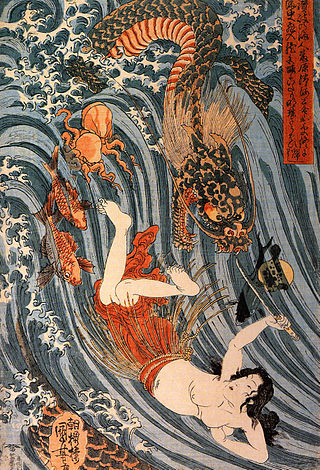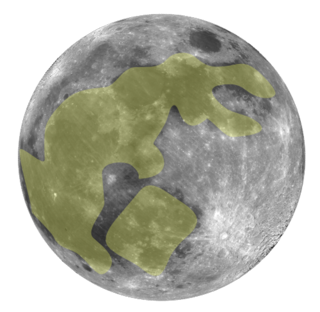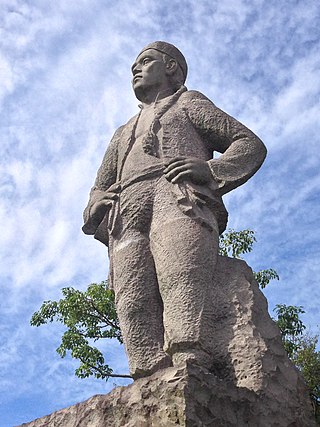Related Research Articles

Pansori is a Korean genre of musical storytelling performed by a singer and a drummer.

Stories and practices that are considered part of Korean folklore go back several thousand years. These tales derive from a variety of origins, including Shamanism, Confucianism, Buddhism, and more recently Christianity.

Ryūjin, which in some traditions is equivalent to Ōwatatsumi, was the tutelary deity of the sea in Japanese mythology. In many versions Ryūjin had the ability to transform into a human shape. Many believed the god had knowledge on medicine and many considered him as the bringer of rain and thunder, Ryūjin is also the patron god (ujigami) of several family groups.

Korean literature is the body of literature produced by Koreans, mostly in the Korean language and sometimes in Classical Chinese. For much of Korea's 1,500 years of literary history, it was written in Hanja. It is commonly divided into classical and modern periods, although this distinction is sometimes unclear. Korea is home to the world's first metal and copper type, the world's earliest known printed document and the world's first featural script.
A kumiho or gumiho is a creature that appears in the folktales on East Asia and legends of Korea. It is similar to the Chinese huli jing, the Japanese kitsune and the Vietnamese hồ ly tinh. It can freely transform into a beautiful woman often set out to seduce men, and eat their liver or heart. There are numerous tales in which the kumiho appears, several of which can be found in the encyclopedic Compendium of Korean Oral Literature.
Chunhyangga (Korean: 춘향가) is a pansori folktale from Korea. Being a pansori, Chunhyangga is a narrative art form, and is traditionally performed by two people: a singer and drummer. There is also a story based off the Chunhyangga pansori called Chunhyangjeon.
Jeokbyeokga is one of the five surviving stories of the Korean pansori storytelling tradition. The other stories are Simcheongga, Heungbuga, Chunhyangga and Sugungga. It is also known as Hwaryongdo. This story is a retelling of the Chinese historical legend of the Battle of Red Cliffs. Jeokbyeokga is a heroic story. Therefore, the expressions are grand, sublime, and strong. Accordingly, female singers rarely sing it. Jeokbyeokga has many scenes depicting conflict between the king, feudal lords and a commander, so the singer must have the capability of making grand vocalizations. A singer with an intense voice is aptly suited for Jeokbyeokga. Jeokbyeokga is considered to be the most difficult pansori, even though it is short.
"The Bold Knight, the Apples of Youth, and the Water of Life" is a Russian fairy tale collected by Alexander Afanasyev in Narodnye russkie skazki. The tale and is variants are numbered 171-178 in the first volume of the three-volume collection.

Changgeuk (Korean: 창극) or ch'angguk is a genre of traditional Korean opera, performed as a play but in the Korean folk song style known as pansori. As such, it is also sometimes called Korean pansori opera. Generally, a changgeuk play will include 20 to 30 actors and 30 to 50 orchestra members.

The Moon rabbit or Moon hare is a mythical figure in East Asian and indigenous American folklore, based on pareidolic interpretations that identify the dark markings on the near side of the Moon as a rabbit or hare. In the realm of East Asian mythology, the rabbit is seen as pounding with a mortar and pestle, but the contents of the mortar differ among Chinese, Japanese, and Korean folklore. In Chinese folklore, the rabbit is often portrayed as a companion of the Moon goddess Chang'e, constantly pounding the elixir of life for her and some show the making of cakes or rice cakes; but in Japanese and Korean versions, the rabbit is pounding the ingredients for mochi or some other type of rice cakes. In some Chinese versions of the mythological tradition, the rabbit pounds medicine for the mortals and some include making of mooncakes. Moon folklore from certain Amerindian cultures of North America also has rabbit themes and characters.

Gim (Korean: 김), also romanized as kim, is a generic term for a group of edible seaweeds dried to be used as an ingredient in Korean cuisine, consisting of various species in the genera Pyropia and Porphyra, including P. tenera, P. yezoensis, P. suborbiculata, P. pseudolinearis, P. dentata, and P. seriata.
Wani was a dragon or sea monster in Japanese mythology. Since it is written using the kanji 鰐wani is translated as "crocodile", or sometimes "shark".

The Chinese zodiac is a traditional classification scheme based on the Chinese calendar that assigns an animal and its reputed attributes to each year in a repeating twelve-year cycle. In traditional Chinese culture, the Chinese zodiac is very important and exists as a reflection of Chinese philosophy and culture. Chinese folkways held that one's personality is related to the attributes of their zodiac animal. Originating from China, the zodiac and its variations remain popular in many East Asian and Southeast Asian countries, such as Japan, South Korea, Vietnam, Singapore, Nepal, Bhutan, Cambodia, and Thailand.

Liao Tianding was a legendary Taiwanese Robin Hood figure who foiled oppressive rulers when Taiwan was under Japanese rule.
Heungbu and Nolbu or Heungbujeon is a Korean story written in the late Joseon Dynasty (1392–1897). The identity of its writer is unknown. The story of "Heungbu and Nolbu" reportedly took place about 200 years ago, and was passed down through generations. It is now told as a popular bedtime story for Korean children.
The Tortoise and the Hare is one of Aesop's Fables.
Lee Ki-ho is a South Korean writer.
The Tale of Shim Chong is a 1985 North Korean musical film directed by Shin Sang-ok.
The Story of Sim Cheong or The Tale of Shim Ch'ŏng is a Korean classical novel about a filial daughter named Sim Cheong. Simcheongga, the pansori version, performed by a single narrator, is believed to be the older version of the story, with the novel having been adapted from its script. Some examples of the story, though nominally referred to as novels, are practically the same as the pansori libretti, and are thus referred to as "pansori novels".
Pansori-based fiction is a genre of novels that are related to pansori or fiction with strong characteristics of pansori.
References
- ↑ 네이버 지식사전
- 1 2 Jeong, C.-K. (2009). "The Way of Reading and Contexts of <Gutojiseol(The Tale about a Rabbit and a Turtle)> in the Kim Yu-shin Section of 『Samguksagi』". Hanguk munhak nonchong. 52: 5–30. doi:10.16873/tkl.2009..52.5.
- ↑ Che, M. (January 9, 2023). "토끼의 간 이야기 Hare's Liver" . Retrieved April 15, 2024.
- ↑ "Hare's Liver". Encyclopedia of Korean Folk Culture . Retrieved 2024-03-28.
- ↑ "이날치X앰비규어스 댄스컴퍼니 - 범 내려온다 [유희열의 스케치북/You Heeyeol's Sketchbook] 20201009 - YouTube". www.youtube.com. Archived from the original on 2021-12-21. Retrieved 2021-01-01.
- ↑ Choi, Dong-hyun (2001). "수궁가". Encyclopedia of Korean Folk Culture . Retrieved January 5, 2021.